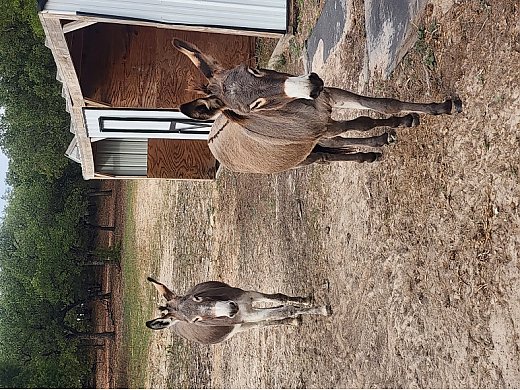Horse and Donkey Breeding: A Comprehensive Guide to Mule and Hinny Production
The world of equine breeding is fascinating, encompassing a vast array of breeds and practices. While horse-to-horse breeding is common knowledge, the fascinating hybrid offspring resulting from the mating of horses and donkeys – mules and hinnies – offer a unique area of study. This comprehensive guide delves into the intricacies of horse and donkey breeding, providing insights into the production of these sturdy and often prized animals.
Understanding the Basics: Mules vs. Hinnies
The key difference lies in the parentage:
- Mule: A cross between a female horse (mare) and a male donkey (jack). Mules are generally larger and stronger than hinnies.
- Hinny: A cross between a male horse (stallion) and a female donkey (jenny). Hinnies tend to be smaller and possess a more horse-like appearance.
Both mules and hinnies are sterile, meaning they cannot reproduce. This sterility is a result of the different chromosome numbers in horses (64) and donkeys (62). The resulting offspring inherit an odd number of chromosomes, preventing proper meiosis and gamete formation.
Breeding Process and Considerations:
Breeding horses and donkeys presents unique challenges:
- Size Discrepancy: The significant size difference between horses and donkeys requires careful management during mating. Artificial insemination is often preferred to natural mating to minimize injury risk.
- Temperament: Donkeys, particularly jacks, can be quite stubborn and aggressive. Experienced handlers are essential to ensure the safety of both animals.
- Gestation Period: The gestation period for mule and hinny pregnancies is similar to that of horses, lasting approximately 11-12 months. However, the pregnancy can be more challenging, with an increased risk of complications.
- Veterinary Care: Regular veterinary checkups are crucial throughout the pregnancy and after birth. Specialized care may be required due to the hybrid nature of the offspring.
Characteristics of Mules and Hinnies:
Mules and hinnies inherit a blend of traits from both parents:
- Strength and Endurance: They are known for their exceptional strength, endurance, and surefootedness, making them ideal for various tasks.
- Intelligence and Temperament: They often exhibit a combination of the intelligence of donkeys and the temperament of horses.
- Hardiness and Longevity: Mules and hinnies are often hardier and have longer lifespans than either parent breed.
Uses of Mules and Hinnies:
Historically, and increasingly today, mules and hinnies are valued for their utility:
- Pack Animals: Their strength and endurance make them excellent pack animals in mountainous or challenging terrain.
- Farm Animals: They are frequently used for farm work, including plowing and hauling.
- Recreational Riding: Their surefootedness and calm demeanor also make them suitable for recreational riding.
Ethical Considerations:
The breeding of mules and hinnies should always be approached ethically. This includes:
- Animal Welfare: Prioritizing the health and well-being of both parent animals throughout the breeding and gestation process is paramount.
- Responsible Ownership: Potential owners should be fully aware of the unique needs and care requirements of these hybrids.
Conclusion:
The breeding of mules and hinnies is a specialized field requiring knowledge, experience, and a deep understanding of equine reproduction and animal welfare. While challenging, the resulting animals are often exceptional, combining the best traits of both horses and donkeys. This guide serves as a starting point for those interested in exploring this fascinating aspect of equine breeding. Further research and consultation with experienced breeders and veterinarians are highly recommended.
Keywords: Horse and Donkey Breeding, Mule Breeding, Hinny Breeding, Mule Production, Hinny Production, Horse Breeding, Donkey Breeding, Hybrid Animals, Equine Breeding, Animal Husbandry, Gestation Period, Mule Characteristics, Hinny Characteristics, Ethical Considerations in Animal Breeding.

